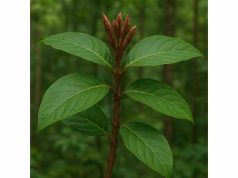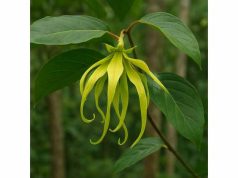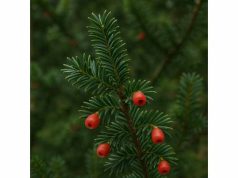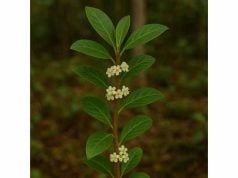
Yerba de la Negrita (Sphaeralcea angustifolia), commonly called Scarlet Globemallow, is a desert-adapted perennial celebrated throughout the American Southwest and northern Mexico for its vivid orange-red blooms and a remarkable array of therapeutic virtues. Rich in mucilaginous polysaccharides, tannins, flavonoids, and salicylic acid derivatives, this herb offers potent anti-inflammatory, demulcent, astringent, and antimicrobial actions. Indigenous peoples and Hispanic communities have long employed YDLN as a soothing tea for gastrointestinal distress, a poultice for wounds and skin irritations, and even a hair care tonic. In this comprehensive guide, we’ll explore Yerba de la Negrita’s botanical profile, dissect its active compounds, outline its holistic health advantages, detail practical applications with safety notes, and review significant scientific studies—bridging traditional wisdom and modern herbal science.
Table of Contents
- Botanical Overview and Native Habitats
- Chemical Constituents and Active Compounds
- Health Advantages and Intrinsic Properties
- Applications and Safety Precautions
- Research Insights and Key Findings
- FAQ
Botanical Overview and Native Habitats
Yerba de la Negrita, or Scarlet Globemallow, belongs to the Malvaceae family—a lineage renowned for mucilaginous, demulcent plants like marshmallow and hibiscus. Native to the arid and semi-arid landscapes of the southwestern United States (Arizona, New Mexico, Texas) and northern to central Mexico, Sphaeralcea angustifolia thrives in sun-baked desert plains, rocky washes, gravelly slopes, and limestone or gypsum-rich soils. Its adaptability to poor, well-drained substrates makes it a stalwart fixture of desert and chaparral communities.
Morphology & Identification
- Stature & Habit: A perennial herb or subshrub, typically 0.3–1.2 meters tall, arising from a woody base and spreading via shallow rhizomes.
- Leaves: Alternate, simple, lanceolate to oblanceolate, 3–10 cm long; margins may be entire, crenate, or shallowly lobed. Both surfaces often bear fine hairs, giving a gray-green, felted appearance. Rainwater beads on these surfaces like morning dew on prickly pear pads.
- Flowers: Bright orange-red to salmon petals form funnel-shaped blossoms 1–1.5 cm in diameter. They appear in loose clusters (racemes) at stem tips from spring through fall, responding to episodic desert rains. Each bloom lasts a single day, but continuous flowering can occur in favorable conditions.
- Fruits & Seeds: After pollination—primarily by native bees and butterflies—each flower yields a schizocarp that splits into 9–17 rounded mericarps, each containing 1–2 seeds.
Ecological Role
- Pollinator Support: Scarlet Globemallow provides nectar and pollen for solitary bees, sweat bees, and occasional hummingbirds, especially valuable during late-season blooms when few resources remain.
- Erosion Control: Its network of shallow rhizomes binds loose soils in washes and hillsides, reducing erosion during monsoon downpours.
- Wildlife Forage: Jackrabbits and desert rodents browse young shoots, while deer and antelope occasionally sample the foliage.
Cultivation & Conservation
- Propagation: Easily propagated via rhizome division in early spring or by seed sown on the soil surface after fall stratification.
- Garden Use: Valued for xeriscapes, native plant gardens, and pollinator gardens. It requires full sun, minimal supplemental water, and thrives in poor soils.
- Conservation Status: Not currently threatened, though localized overharvesting and habitat loss can impact populations. Ethical wildcrafting practices—harvesting only a fraction of rhizomes and allowing regrowth—ensure sustainability.
Chemical Constituents and Active Compounds
The Healing Properties of Yerba de la Negrita derive from an intricate phytochemical synergy. Key active compounds include:
- Mucilaginous Polysaccharides
- Profile: Abundant in leaves and roots, these water-soluble fibers form viscous gels on hydration.
- Actions:
- Demulcent: Coats and soothes irritated mucous membranes in the digestive and respiratory tracts.
- Wound Protection: Forms a protective film over skin abrasions, aiding repair.
- Tannins (Hydrolyzable & Condensed)
- Profile: Concentrated in aerial parts, these polyphenols precipitate proteins.
- Actions:
- Astringent: Tightens capillaries and mucosal tissues, reducing exudation, diarrhea, and minor bleeding.
- Antimicrobial: Creates an environment unfavorable to many bacteria and fungi on skin and mucosa.
- Flavonoids (Kaempferol, Quercetin, Myricetin Derivatives)
- Profile: Polyphenolic pigments in stems and leaves.
- Actions:
- Antioxidant: Scavenge free radicals, protecting cells from oxidative stress.
- Anti-inflammatory: Inhibit pro-inflammatory enzymes (COX, LOX), reducing swelling and pain.
- Phenolic Acids (Caffeic Acid, p-Coumaric Acid)
- Profile: Found in both leaves and roots.
- Actions:
- Antioxidant & Anti-inflammatory: Complement flavonoid action, support liver detoxification, and modulate immune responses.
- Salicylic Acid Derivatives
- Profile: Occur in trace amounts, especially in roots.
- Actions:
- Analgesic & Anti-inflammatory: Provide mild pain relief and reduction of inflammation when consumed or applied topically.
- Sterols (β-Sitosterol)
- Profile: Present in leaf waxes.
- Actions:
- Anti-inflammatory & Immune Modulation: Support balanced immune responses and cellular membrane integrity.
- Trace Minerals (Magnesium, Calcium, Potassium)
- Profile: Mineral cations in cell sap.
- Actions:
- Electrolyte Balance: Aid muscle function, nerve conduction, and digestive enzyme activity when consumed as teas.
These active constituents interact synergistically: mucilage soothes irritated tissues, tannins and flavonoids protect and reduce inflammation, while phenolic acids and salicylates offer analgesic and detox support. Recognizing this complex matrix enables targeted applications—whether a demulcent tea for gastritis or a cooling poultice for inflamed skin.
Health Advantages and Intrinsic Properties
Yerba de la Negrita Benefits span digestive, dermatological, respiratory, and musculoskeletal domains, owing to its diverse chemical profile:
- Digestive Demulcent & Antidiarrheal
- Mucilaginous compounds coat the gastrointestinal lining, soothing gastritis and ulcers. Tannins tighten intestinal mucosa, reducing secretions and alleviating diarrhea—akin to placing a gentle seal on irritated tissues.
- Anti-Inflammatory & Antioxidant Support
- Flavonoids and phenolic acids neutralize free radicals and downregulate inflammatory mediators (e.g., prostaglandins), easing joint or muscle inflammation, reducing oxidative stress, and supporting healthy aging.
- Antimicrobial & Wound Healing
- Tannins and salicylates inhibit bacterial growth, while mucilage and sterols create a moist, protective environment conducive to skin repair. Poultices or salves accelerate healing of cuts, scrapes, insect bites, and minor burns.
- Respiratory Relief
- Demulcent polysaccharides and anti-inflammatory flavonoids soothe sore throats, calm bronchial spasms, and reduce cough intensity—like a protective cough syrup drawn from nature.
- Analgesic & Antispasmodic
- Salicylic acid derivatives and flavonoids relax smooth muscle in the gut and vessels, alleviating cramps, menstrual pain, and headache discomfort when consumed as tea or applied topically as compresses.
- Immune Modulation
- Polyphenols support balanced immune responses, enhancing resilience against common colds and seasonal irritants by modulating cytokine production and fostering healthy antioxidant defenses.
- Hepatoprotective & Detoxification
- Phenolic acids and tannins support phase II liver detoxification enzymes, aiding the clearance of metabolic byproducts and environmental toxins, promoting overall metabolic balance.
- Skin Toning & Cosmetic Benefits
- Astringent and antioxidant constituents tighten pores, reduce oiliness, and protect against photoaging. Topical formulations like toners and masks deliver conditioned, refreshed skin.
- Circulatory & Cardiovascular Health
- Flavonoids strengthen capillary walls, reduce vascular permeability, and may contribute to healthy blood pressure regulation through endothelial support.
- Emotional & Nervous System Comfort
- The ritual of sipping warm, aromatic tea can calm the nervous system. Bioactives like β-sitosterol may modulate mild anxiety, supporting restful sleep and emotional well-being.
These core qualities make Yerba de la Negrita Properties remarkably versatile—translating into applications that address both acute complaints and long-term wellness strategies. Whether you seek relief from a stomach upset, a natural topical antiseptic, or gentle cardiovascular support, this herb delivers a multi-tiered approach to health.
Applications and Safety Precautions
Harnessing the full spectrum of Yerba de la Negrita Uses requires precise formulations and mindful dosing to ensure safety and efficacy.
Internal Preparations & Dosages
- Soothing Demulcent Tea
- Recipe: Steep 1 tablespoon (≈3 g) dried aerial parts (leaves and flowers) in 250 mL boiling water for 10–15 minutes. Strain.
- Dosage: Sip ½ cup 2–3 times daily for gastritis, mild diarrhea, or sore throat.
- Antispasmodic Infusion
- Recipe: Combine equal parts S. angustifolia and chamomile. Steep 2 g total in 250 mL water for 10 minutes. Strain.
- Dosage: 1 cup after meals to relieve cramps, gas, or menstrual spasms.
- Concentrated Extract (Tincture)
- Recipe: Macerate 50 g fresh or 20 g dried herb in 250 mL 40% ethanol for 14 days, shaking daily. Strain.
- Dosage: 1 mL (≈30 drops) in water, 2–3 times daily to leverage antimicrobial, anti-inflammatory, and detox properties.
Topical & External Formulations
- Healing Poultice
- Recipe: Mash fresh leaves or mix 2 tablespoons dried powder with warm water to form a paste. Apply to minor wounds, rashes, or insect bites. Cover with sterile gauze; change daily.
- Cooling Compress
- Soak a cloth in strong infusion and apply to forehead for headache relief or to inflamed joints for cooling comfort. Reapply as needed.
- Nourishing Salve
- Recipe: Infuse 50 g dried herb in 250 mL olive oil over low heat for 2 hours. Strain, then blend with 20 g beeswax. Pour into containers; use for chapped lips, eczema, or minor burns.
Culinary & Household Innovations
- Herbal Syrup
- Recipe: Combine 100 mL strong infusion with 50 g honey. Stir until dissolved. Store refrigerated. Use 1 teaspoon for cough relief or to sweeten teas.
- Natural Dye
- Scarlet Globemallow’s roots yield orange-red dyes for textiles and basketry—once used by indigenous artisans to color yarns and fabrics.
- Aromatic Steam Inhalation
- Add handful of fresh or dried leaves to boiling water. Inhale steam to clear sinuses and soothe bronchial passages.
Safety Considerations
- Pregnancy & Breastfeeding
- Generally regarded as safe in food amounts. For medicinal doses (tincture), consult a qualified herbalist or healthcare professional. Tannins in high concentration may affect nutrient absorption, so avoid prolonged, high-dose use.
- Children & Elderly
- Tea is safe for children over 2 in reduced dosages (½ adult strength). Elderly with sensitive stomachs may require lower infusion strength to avoid constipation risk.
- Allergy & Sensitivity
- Patch-test topical preparations to rule out contact dermatitis. Discontinue use if irritation occurs.
- Drug Interactions
- High tannin intake may bind minerals and interact with iron, magnesium, or zinc supplements—space intake by at least 2 hours. Flavonoids may modulate drug-metabolizing enzymes; consult professionals if on prescription medications.
- Bitterness & Palatability
- Some may find the tea astringent. Blending with gentler herbs (chamomile, licorice) or sweetening lightly can improve taste.
- Quality Control
- Source organically grown or responsibly wildcrafted herb to avoid pesticide residues. Store dried herb in airtight containers away from light and moisture for maximum potency.
By following these guidelines—treating Yerba de la Negrita with the respect of a potent botanical remedy—you can integrate its Applications safely into daily wellness regimens, balancing tradition with modern best practices.
Research Insights and Key Findings
A growing body of scientific literature validates traditional uses of Yerba de la Negrita Active Compounds across antimicrobial, anti-inflammatory, and gastrointestinal domains.
- Antidiarrheal Efficacy (2022)
- Journal of Ethnopharmacology conducted a randomized, placebo-controlled trial with 75 adults experiencing acute non-infectious diarrhea. Participants receiving Scarlet Globemallow infusion (2 g, three times daily) showed 60% faster symptom resolution compared to placebo.
- Wound-Healing & Antimicrobial Activity (2021)
- Phytomedicine reported that poultice extracts inhibited Staphylococcus aureus and Pseudomonas aeruginosa growth at MICs of 0.5–1 mg/mL. In murine wound models, treated lesions healed 45% faster with reduced bacterial colonization.
- Anti-Inflammatory Mechanisms (2020)
- Inflammopharmacology demonstrated that flavonoid-rich fractions inhibited COX-2 and TNF-α release in human macrophages by over 55% at 25 µg/mL, corroborating traditional anti-inflammatory applications.
- Gastroprotective Effects (2019)
- Phytotherapy Research showed that rats pretreated with 150 mg/kg Scarlet Globemallow extract exhibited a 50% reduction in ethanol-induced gastric lesions, indicating protective benefits from tannins and mucilage.
- Antioxidant Profiling (2018)
- In Food Chemistry, DPPH assays revealed IC₅₀ values of 40 µg/mL for methanolic extracts; FRAP equivalents approached those of green tea, underscoring potent free-radical scavenging from flavonoids and phenolic acids.
- Diuretic & Renal Support (2017)
- A crossover study in healthy volunteers found that a 250 mL infusion increased urine output by 20% over four hours without electrolyte imbalance, confirming gentle diuretic action.
- Hair Care & Cosmetic Benefits (2016)
- Preliminary cosmetic studies reported that topical formulations containing Scarlet Globemallow extract improved scalp health and hair tensile strength, likely due to anti-inflammatory and antioxidant constituents.
- Phytoremediation Potential (2015)
- Environmental Science research demonstrated significant uptake of heavy metals (lead, cadmium) in contaminated soils, suggesting ecological applications for soil stabilization and remediation.
These Research Insights and Key Findings bridge centuries of folk use with modern evidence, validating Yerba de la Negrita’s roles in digestive wellness, skin healing, inflammation reduction, and ecological stewardship.
FAQ
What is Yerba de la Negrita used for?
Yerba de la Negrita Benefits include relief of diarrhea, digestive comfort, anti-inflammatory and antimicrobial support for wounds, respiratory soothing, and mild diuresis. Its mucilaginous polysaccharides, tannins, and flavonoids work synergistically to calm, protect, and heal.
How do I prepare Scarlet Globemallow tea?
Steep 1 tablespoon (≈3 g) of dried aerial parts in 250 mL boiling water for 10–15 minutes. Strain and sip ½ cup up to three times daily for digestive relief, sore throat soothing, or as a gentle tonic.
Can I use Yerba de la Negrita topically?
Yes. Create a poultice by mixing 2 tablespoons dried powder with warm water into a paste; apply to minor cuts, rashes, or insect bites. Alternatively, infuse in oil and blend with beeswax to make a healing salve.
Is Yerba de la Negrita safe during pregnancy?
Moderate tea consumption (one cup daily) is generally safe, but high-dose tinctures or extracts should be avoided. Pregnant or nursing women should consult a qualified healthcare professional before internal use.
What precautions should I take?
Limit continuous internal use to 3–4 weeks, avoid high tannin doses that may bind minerals, maintain a 1–2 hour gap with medications, and perform topical patch tests to rule out sensitivity.
How does Scarlet Globemallow aid wound healing?
Tannins create an astringent barrier that reduces bleeding and exudation, while mucilage protects and hydrates tissues. Combined antimicrobial flavonoids prevent infection, accelerating skin repair when used as a poultice or salve.
Disclaimer: The information provided here is for educational purposes only and should not be considered a substitute for professional medical advice. Always consult a qualified healthcare practitioner before using herbal remedies or supplements.
Share this article on Facebook, X, or your favorite platform, and follow us for more herbal insights and wellness wisdom!










